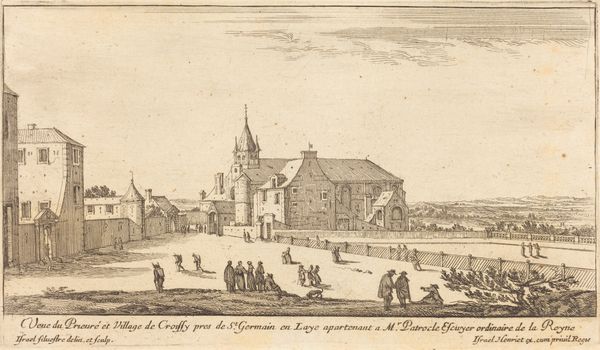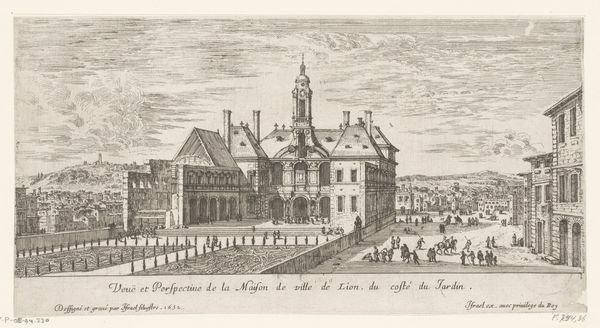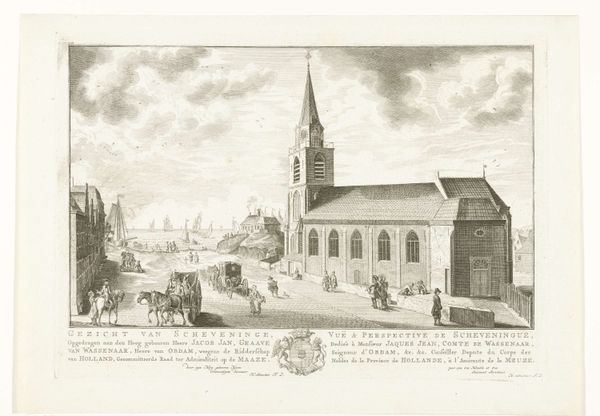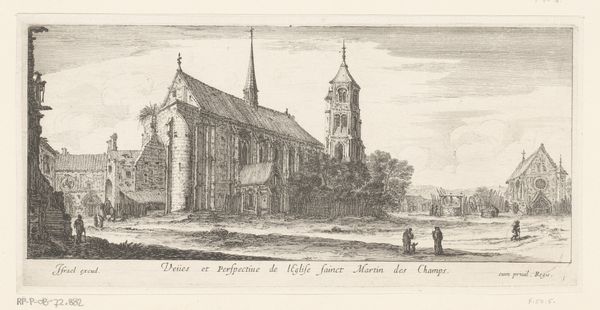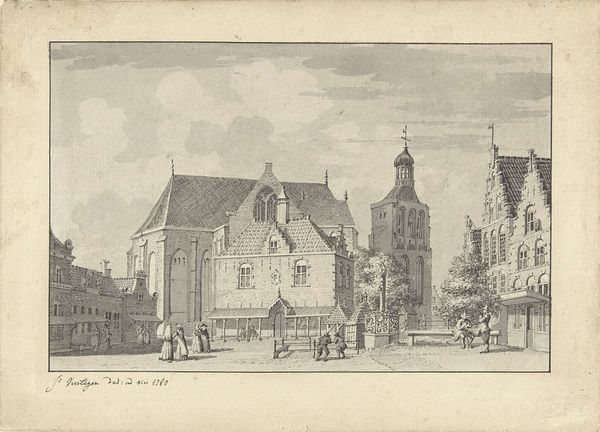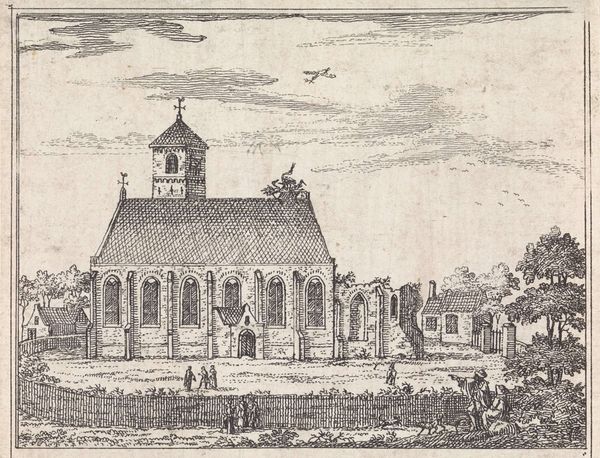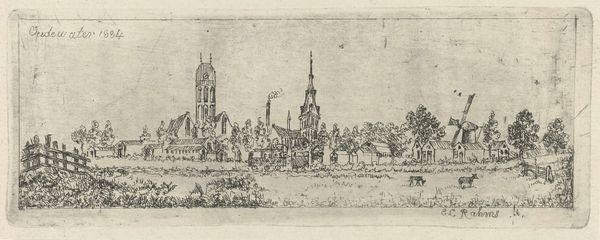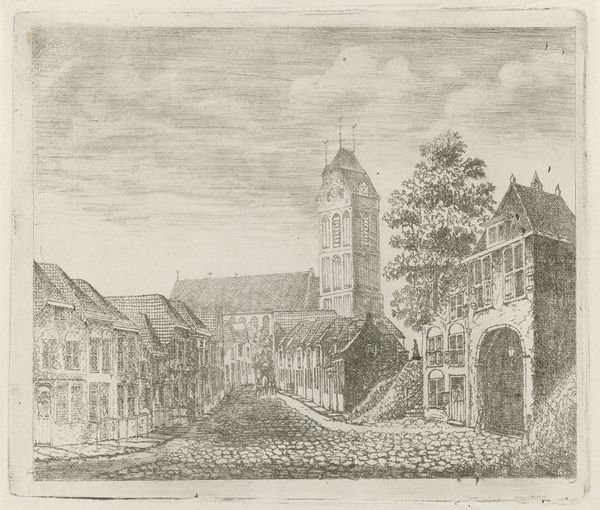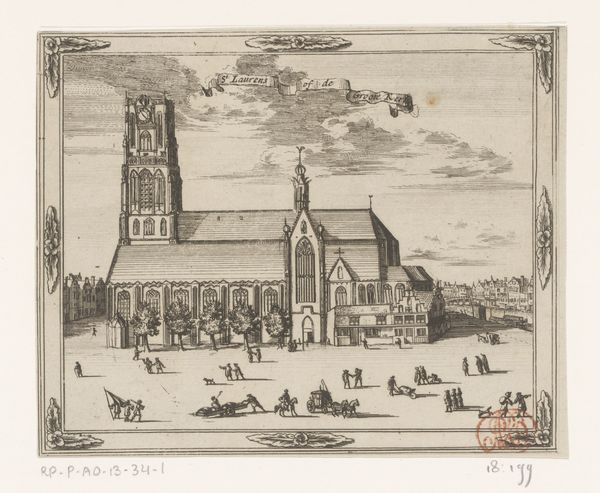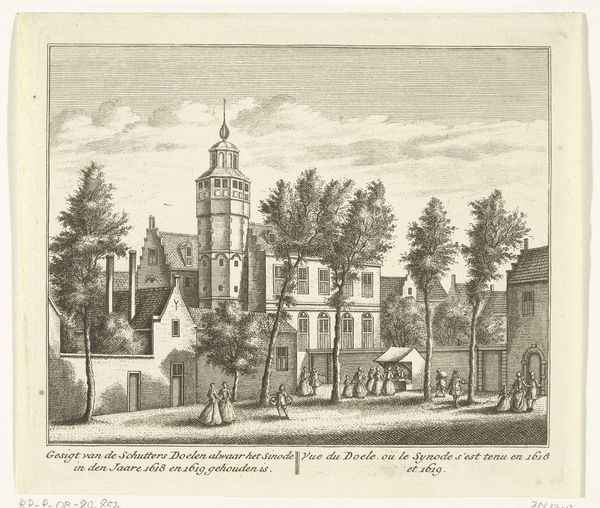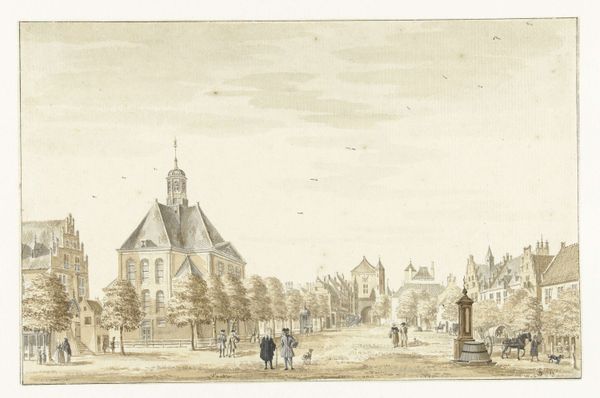
print, engraving, architecture
#
baroque
# print
#
old engraving style
#
landscape
#
engraving
#
architecture
Dimensions: height 90 mm, width 111 mm
Copyright: Rijks Museum: Open Domain
This print, made by Israel Silvestre sometime in the 17th century, gives us a bird's-eye view of the Joyenval Abbey. Silvestre used etching, a printmaking technique that relies on acid to bite lines into a metal plate. He would have covered the plate with a waxy, acid-resistant ground, then scratched his design into the wax, exposing the metal beneath. The plate was then submerged in acid, which ate away at the exposed lines, creating grooves. Ink was applied to these grooves, the surface wiped clean, and the image transferred to paper under great pressure. Consider the labor involved: preparing the plate, creating the design in reverse, the painstaking etching process, and finally, the printing itself. The character of the etched line, precise yet delicate, has a direct relationship to the architecture that Silvestre depicted. It allowed for the relatively quick production of images, making art and information more accessible during the rise of a new, print-based, visual culture. So, this print is not just a picture of an abbey; it’s also a product of its time, deeply connected to the social and economic shifts of early modern Europe.
Comments
No comments
Be the first to comment and join the conversation on the ultimate creative platform.
